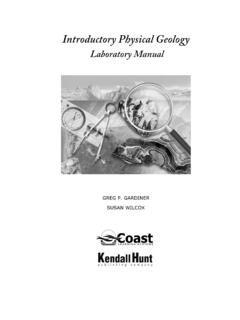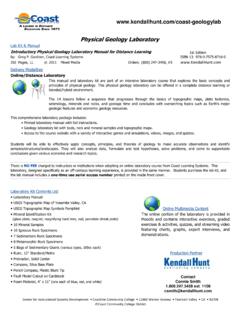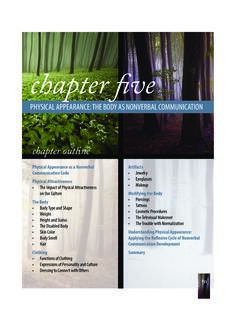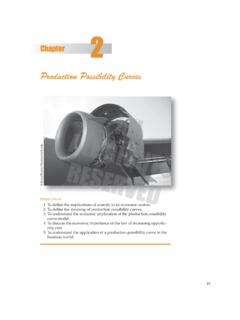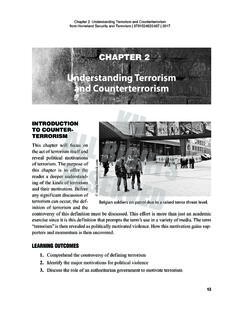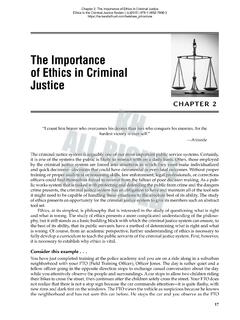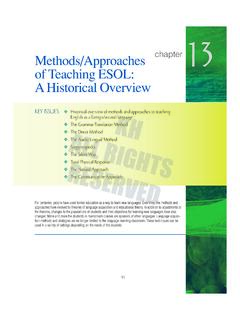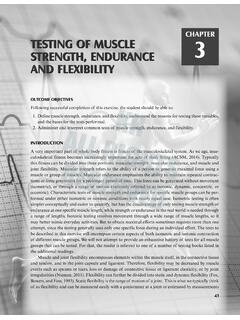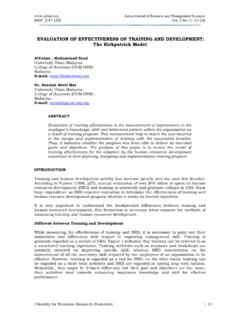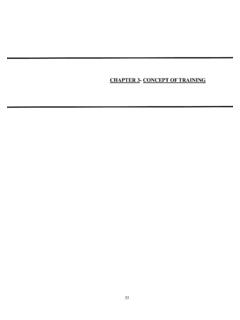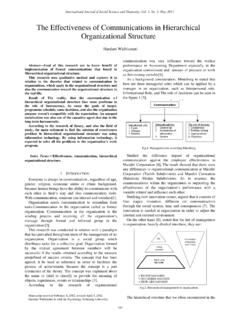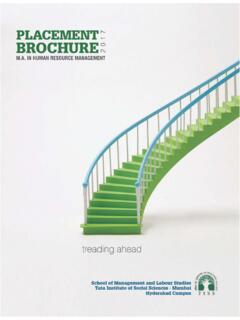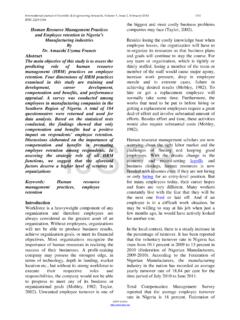Transcription of Human Resource Management and Competitive Advantage 1
1 1 Human Resource Management and Competitive AdvantagePreselection PracticesHR planningJob analysisSelection PracticesRecruitmentSelectionPostselecti on PracticesPractices Affected byExternal FactorsHRM PracticesEmployee-CenteredOutcomesOrgani zation-CenteredOutcomesCompetitiveAdvant ageWorkplace justiceUnionsSafety and healthInternationalOutputRetentionLegal complianceCompany imageCost leadershipProduct differentiationTraining/developmentPerfo rmance appraisalCompensationProductivity improvement programsCompetenceMotivationWork-related 316/11/12 10:45 PM16/11/12 10:45 PM4 Part 1 Introduction1-1 Human Resource Management1-1a HRM Preselection Practices1-1b HRM Selection Practices1-1c HRM Postselection Practices1-1d HRM Practices Infl uenced by External Factors1-2 Who Is Responsible for Developing and Imple-menting HRM Practices?
2 1-2a HR Professional s Role1-2b Line Manager s Role1-3 Gaining a Competitive Advantage1-3a Competitive Advantage Defi ned1-3b Cost Leadership1-3c Product Differentiation1-4 Competitive Advantage and HRM1-4a Evidence Linking HRM Practices to Competitive Advantage1-4b A Model Linking HRM Practices to Competitive Advantage1-4c HRM Practices and Sustained Competitive AdvantageChapter Objectives RevisitedReview QuestionsDiscussion QuestionsExperiential ExercisesAssignmentReferencesbenefi tscompensationcompetitive advantagecost leadership strategydevelopmenthuman Resource managementhuman Resource planningjob analysisjob satisfactionorganizational citizenshiporganizational commitmentpayperformance appraisal processproduct differentiationproductivity improvement programsrecruitmentselectiontrainingunio nsworkplace justiceCHAPTER OUTLINEKEY 416/11/12 10:45 PM16/11/12 10:45 PMChapter 1 Human Resource Management and Competitive Advantage 5 CHAPTER OBJECTIVESUpon completion of this chapter, you will be able to: Understand the nature of a fi rm s Human Resource Management practices.
3 Understand the roles played by line managers and Human Resource professionals in the Human Resource Management process. Understand what Competitive Advantage is and how companies can achieve it. Understand how a fi rm s Human Resource Management practices can help it gain a Competitive Advantage . Understand why Competitive Advantage gained from Human Resource Management practices is likely to be sustained over , any organization s success depends on how it manages its resources. A fi rm s resources propel it toward its goals, just as an engine propels an automobile toward its organizational resources are nonhuman, such as land, capital, and equipment. Although the Management of these resources is very important, a business cannot succeed without also managing its Human resources ( , its people) properly.
4 Just as automobiles will not operate effi ciently (or at all) if they are driven by incompetent people, organizations will not operate successfully unless they too are driven by competent people. People deter-mine the organization s objectives, and people run the operations that allow the organization to reach its Human Resource ManagementAn organization s Human Resource Management (HRM) function focuses on the people aspect of Management . It consists of practices that help the organization deal effectively with its people during the various phases of the employment cycle: preselection, selection, and preselection phase involves planning practices. The organization must decide what types of job openings will exist in the upcoming period and determine what qualifi cations are necessary to perform these jobs.
5 Dur-ing the selection phase, the organization selects its employees. Selection practices include recruiting applicants, assessing their qualifi cations, and ultimately selecting those who are deemed to be the most qualifi the postselection phase, the organization develops HRM practices for effectively managing people once they have come through the door. These practices are designed to maximize the performance and satisfaction levels of a fi rm s employees by providing them with the necessary knowledge and skills to perform their jobs and by creating conditions that will energize, direct, and facilitate the employees efforts toward meeting the organiza-tion s discuss these HRM practices throughout the remainder of this book.
6 In the following paragraphs, we provide a preview of what is to come, as we briefl y describe each practice and note the chapter in which it Resource Management The organizational function that consists of practices that help the organization deal effectively with its people during the various phases of the employment 516/11/12 10:45 PM16/11/12 10:45 PM6 Part 1 Introduction1-1a HRM Preselection PracticesThe HRM preselection practices, which are Human Resource planning and job analysis, lay the foundation for the other HRM practices. In other words, fi rms must analyze and plan for their treatment of workers before they can carry out the remaining HRM Resource PLANNING (CHAPTER 3) Human Resource plan-ning helps managers anticipate and meet changing needs relating to the acquisition, deployment, and utilization of its The organization fi rst maps out an overall plan (called a strategic plan).
7 Then, through a pro-cess called demand and supply forecasting, it estimates the number and types of employees needed to carry out successfully its overall plan. Such informa-tion enables a fi rm to plan its recruitment, selection, and training strategies. For example, let s say that a fi rm s HR plan estimates that 15 additional en-gineers will be needed during the next year. The fi rm typically hires recent engineering graduates to fi ll such positions. Because these majors are in high demand, the fi rm decides to begin its campus recruiting early in the ac-ademic year, before other companies can snatch away the best ANALYSIS (CHAPTER 4) Job analysis is a systematic procedure for gathering, analyzing, and documenting information about particular jobs.
8 The analysis specifi es what each worker does, the work conditions, and the worker qualifi cations necessary to perform the job successfully. Job analysis information is used to plan and coordinate nearly all HRM practices, includ-ing these (see Figure 1-1): 1. Determining job qualifi cations for recruitment purposes 2. Choosing the most appropriate selection techniques 3. Developing training programs 4. Developing performance appraisal rating forms 5. Helping to determine pay rates 6. Setting performance standards for productivity improvement programshuman Resource planning A process that helps companies identify their future HRM needs and how those needs can be analysis A systematic procedure for gathering, analyzing, and documenting information about particular 1-1 Job AnalysisBob is the HR director of Spaniel Corp.
9 Bob uses job analysis information to:Uses of Job Analysis InformationChoose the best selection techniques for hiring that job qualifications for recruitment when he needs to make a hiringdecision for the bookkeeping position he has training programs for the employees of Spaniel Corp., includingsoftware training to keep the bookkeeping performance appraisal rating forms, so everyone is evaluated fairly from the bookkeeper to the determine pay raises, so he can give the bookkeeper a salary boostthat is performance standards for productivity improvement programs, so thateveryone including the bookkeeper can do things 616/11/12 10:45 PM16/11/12 10:45 PMChapter 1 Human Resource Management and Competitive Advantage 7 For example, an organization may decide to use a mechanical aptitude test to screen applicants because a job analysis indicated that mechanical aptitude is an important job skill.
10 Or a fi rm may raise the pay of one of its employees because a job analysis indicated that the nature of the work had recently changed and was now more HRM Selection PracticesBy HRM selection practices, we mean policies and procedures used by orga-nizations to staff their positions. We now briefl y describe these (CHAPTER 5) Organizations use recruitment to locate and attract job applicants for particular positions. Organizations may recruit candidates internally ( , recruit current employees seeking to advance or change jobs) or externally. The aim of recruitment practices is to identify a suitable pool of applicants quickly, cost effi ciently, and (CHAPTER 6) Selection involves assessing and choosing job candidates. To be effective, selection processes must be technically sound ( , accurate) and HRM Postselection PracticesCompanies implement postselection practices to maintain or improve their workers job performance AND DEVELOPMENT (CHAPTER 7) Training and develop-ment are planned learning experiences that teach workers how to perform their current or future jobs effectively.
